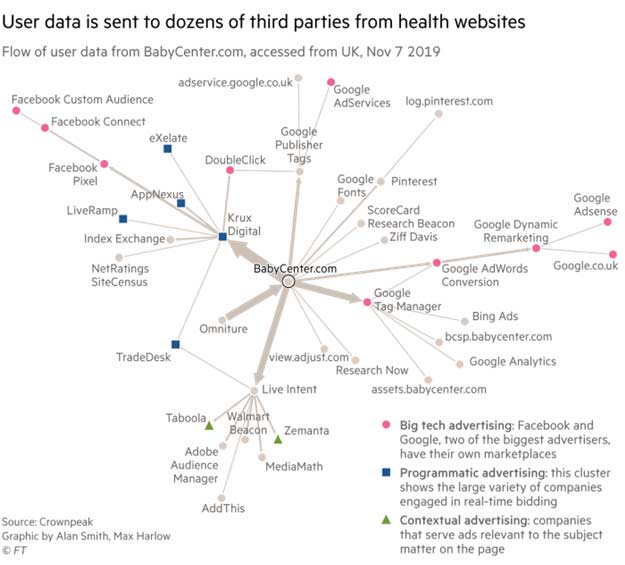Boyan Slat Unveils the Ocean Cleanup Interceptor
Boyan Slat, a young Dutch entrepreneur, and his group Ocean Cleanup have invented an ingenious collection barge to clean plastic debris from our oceans. When their barge, called System 001/B, was tested in June 2019 in the Great Pacific Garbage Patch — the first plastic-ridden area Slat planned to tackle — it worked successfully.1
The patch, a trash vortex between the West Coast of North America and Japan,2 is twice the size of Texas.3 During its test run in the Garbage Patch, System 001/B captured visible pieces of plastic debris — sometimes called macroplastics — large ghost nets used with commercial fishing and even microplastics in its haul.4
On the basis of challenges discovered in its test run, The Ocean Cleanup team will begin to design an improved barge to be known as System 002. And, there is more good news about The Ocean Cleanup's efforts, detailed in the video, "Boyan Slat Unveils the Ocean Cleanup Interceptor."
In October, they rolled out an innovative and workable plan to turbocharge plastic cleanup efforts, pun intended.5 The group ascertained that about 80% of ocean plastic pollution comes from the world's rivers and they have developed a plan to target the 1,000 most plastic-polluting rivers with a new invention.6
The device, called the Interceptor, can collect 50,000 kilos (110,231 pounds) of plastic trash every day — equivalent to 1 million soda bottles, according to the featured video — and may collect up to 100,000 kg a day under perfect conditions.7 Two Interceptors have already been deployed — one in Jakarta, Indonesia, and one in Klang, Malaysia.8 Others are in the works.
Which Rivers Need To Be Targeted?
"When it rains, plastic washes from street to creek to river to ocean," Slat points out9 — a fact which seems pretty evident. But how can it be determined which specific rivers are the worst culprits and need to be targeted? After all, there are about 100,000 rivers in the world!
The Ocean Cleanup created a monitoring system that can be attached to a bridge, scanning for plastic that floats by. With the use of artificial intelligence, the system allowed The Ocean Cleanup team to automatically measure how much plastic was flowing out of a river.
Based on that information, they were able to create an interactive global map model, the first of its kind, that ranks rivers on the basis of the amount of plastic pollution in them.
It was soon discovered that a small fraction — only 1 percent — was causing most of the pollution, says Slat in his Interceptor presentation. If 100,000 rivers were contributing to plastic pollution, the cleanup task might be overwhelming. But since a relatively small number of rivers are responsible for most of the pollution, those 1,000 plastic-polluting rivers can be targeted with the new device.10
The Interceptor Is Accepted by Other Countries
Obviously, an ambitious plan to attack plastic river waste on an international scale needs the buy-in from world leaders as well as funding, and The Ocean Cleanup is securing both.
Working with government leaders and private corporations, the team plans to install Interceptors in the 1,000 most-polluted rivers within the next five years.11 Those of us who are concerned about plastic pollution know that time is of the essence.
In addition to the Interceptors already installed in Malaysia and Indonesia, others are planned for the Mekong Delta in Vietnam and Santo Domingo in the Dominican Republic.12 Thailand has also agreed to situate an Interceptor near Bangkok.
The Ocean Cleanup has not neglected the U.S., which is clearly one of the world's major producers and disposers of plastic. It is currently in talks with officials in Los Angeles county, according to the video report. Though an Interceptor costs approximately $777,000 right now, The Ocean Cleanup predicts that costs will come down as production increases.13
The Challenge of Closing the Plastic Tap
River cleanup is crucial to solving the ocean plastic problem because removing existing plastic in the ocean is not enough, says Slat in the video.14
"To truly rid the oceans of plastic, what we need to do is two things. One, we need to clean up the legacy pollution, the stuff that has been accumulating for decades and doesn't go away by itself. But, two, we need to close the tap, which means preventing more plastic from reaching the oceans in the first place. Rivers are the arteries that carry the trash from land to sea."
The Ocean Cleanup doesn't want to be "the garbage collector of the oceans," says Slat, though it would be a "pretty sustainable business model." Rather, The Ocean Cleanup's goal "is to put ourselves out of business."15
Still, judging by current pollution data, it will be quite a while before The Ocean Cleanup runs out of plastic garbage to collect. According to the Environmental Protection Agency, a mere 9.1% of the plastic material generated in the U.S. municipal solid waste stream was recycled in 2015, and only about 30% of plastic bottles and jars were recycled.16,17 That is why The Ocean Cleanup's campaign is so important and urgent.
How Does the Interceptor Work?
According to the "Boyan Slat Unveils The Ocean Cleanup Interceptor" video, the Intercept system is anchored to the riverbed and makes use of the natural flow of the river to collect plastic debris as it floats by.
Its barrier guides the plastic into the mouth of the Interceptor and a conveyer belt scoops the plastic out of the water. (Slat uses scores of little yellow rubber duckies in the video to demonstrate the system's effectiveness.) To prevent clogging, the belt has been made to be permeable and behind it is a flow channel that creates a suction effect.18
After the plastic has been funneled into the Intercept, the conveyer places the plastic in the "shuttle," a basket on wheels, which distributes the plastic across six dumpsters, sensing which ones are full or empty. Each dumpster can hold 50 cubic meters (1,765 cubic feet) of trash.
When the dumpsters are full, the Interceptor signals through its internet-linked, onboard computer to local operators to bring a boat for towing the full barge so the plastic can be emptied and recycled.19 While the barge is removed from the river for emptying, the shuttle can still collect plastic, says Slat.
The Interceptor's Environmentally Sensitive Features
When you look at the Interceptor's features, it is clear The Ocean Cleanup team has thought through all the potential problems that could come from such a system including its environmental toll.
For example, even though the Interceptor's floating barrier directs garbage into the system, it will usually only span part of the river so it will not interfere with the movement of wildlife and the safe passage of vessels. The Interceptor is able to do this because The Ocean Cleanup discovered through sensors that at certain points in many rivers, "all the plastic is flowing through this very narrow band," says Slat.
This removes the need for the Interceptor to span the whole width of the river.20 Next, the Interceptor is powered by solar panels and onboard lithium-ion batteries that enable it to operate day and night with no human operator, and without noise or exhaust fumes.21
Finally, the nose of the Interceptor has been engineered to deflect large objects like trees that could enter the unit and harm the machinery. And, because the Interceptor is designed like a catamaran sailboat, it has a low center of gravity and is very unlikely to tip over. "It will stay upright no matter what," Slat says.
Is the Interceptor Cost Effective?
The key metric to determine if a plastic cleanup method is practical is the cost per kilogram of plastic collected, says Slat. Because of the Interceptor's effectiveness and the fact that it is a "series produced product," it offers the lowest cost for such removal.
But there is another metric through which the Interceptor's costs should be analyzed, says Slat, and that is the cost to tourism and fisheries in coastal countries of doing nothing about plastic waste.
Countries are "losing money every day" that they do not invest in plastic removal, he says. Dramatic before and after pictures of plastic-polluted and cleaned rivers during his presentation underscore the urgency of tackling plastic waste and the feasibility of deploying the Interceptor.
Plastic pollution take a huge toll on marine life, which often mistake the plastic bits for food. Chemicals used to make plastics disrupt hormones, embryonic development and gene expression, and are linked, in humans, to obesity, heart disease and cancer. It is estimated that humans are now eating, swallowing or breathing in about 2,000 pieces of microplastic a week, equal to the weight of one credit card.22
What Can You Do About Plastic Pollution?
While technology like the Interceptor is an encouraging step forward, each and every one of us has a responsibility and share the burden for putting an end to plastic pollution. Below is a sampling of strategies that can help:
|
Don't use plastic bags — use reusable bags |
|
Make sure the items you recycle are recyclable (See this list.) |
|
Use reusable shopping bags for groceries |
|
Take your own leftovers container to restaurants |
|
Bring your own mug for coffee, and bring drinking water from home in glass water bottles instead of buying bottled water |
|
Request no plastic wrap on your newspaper and dry cleaning |
|
Store foods in glass containers or mason jars rather than plastic containers and plastic freezer bags |
|
Avoid disposable utensils and straws and buy foods in bulk when you can |
|
Opt for nondisposable razors, washable feminine hygiene products for women, cloth diapers, handkerchiefs instead of paper tissues, rags in lieu of paper towels and infant toys made of wood rather than plastic |
|
Avoid processed foods (which are stored in plastic bags with chemicals). Buy fresh produce instead, and forgo the plastic bags |
from Articles https://ift.tt/35RMrZF
via IFTTT



